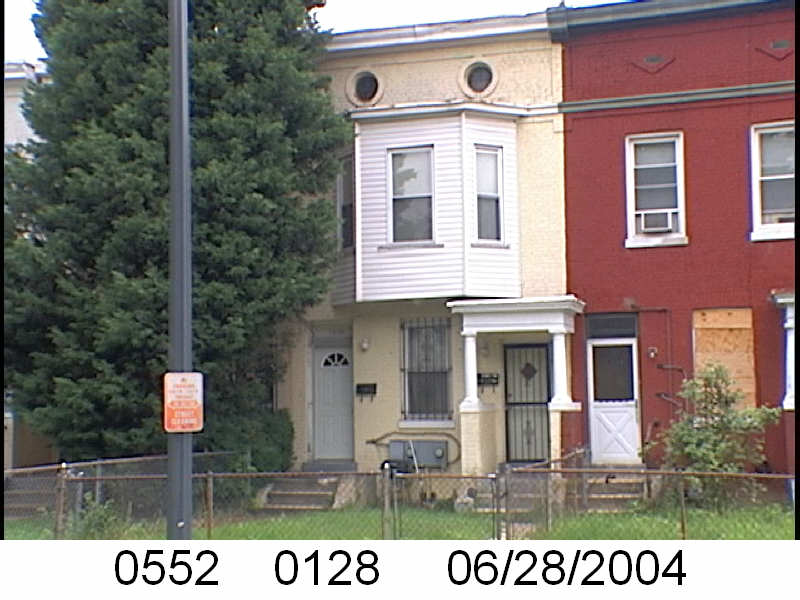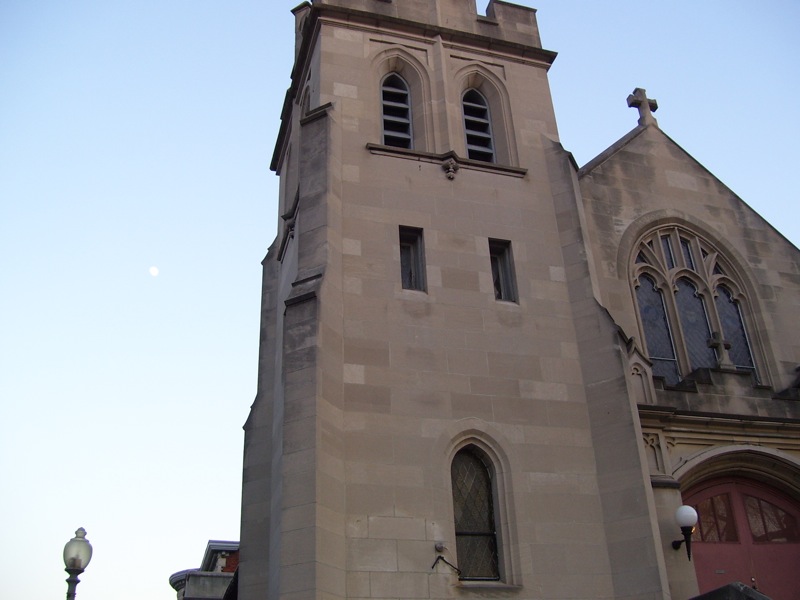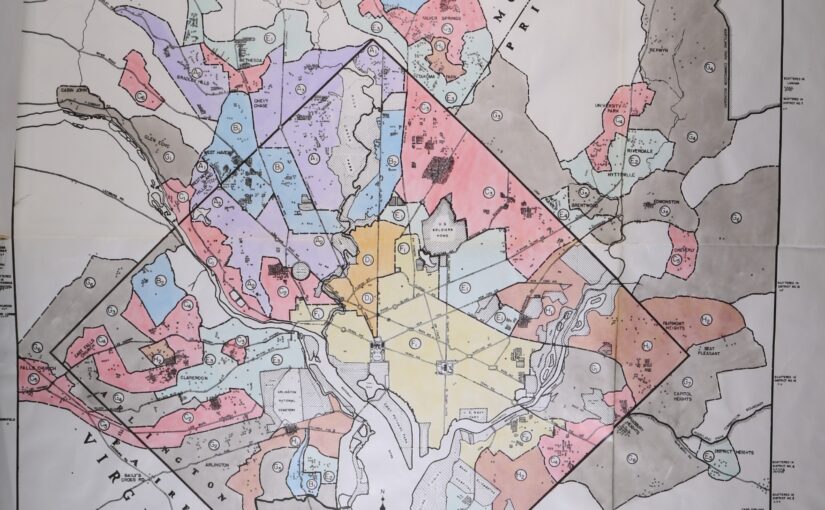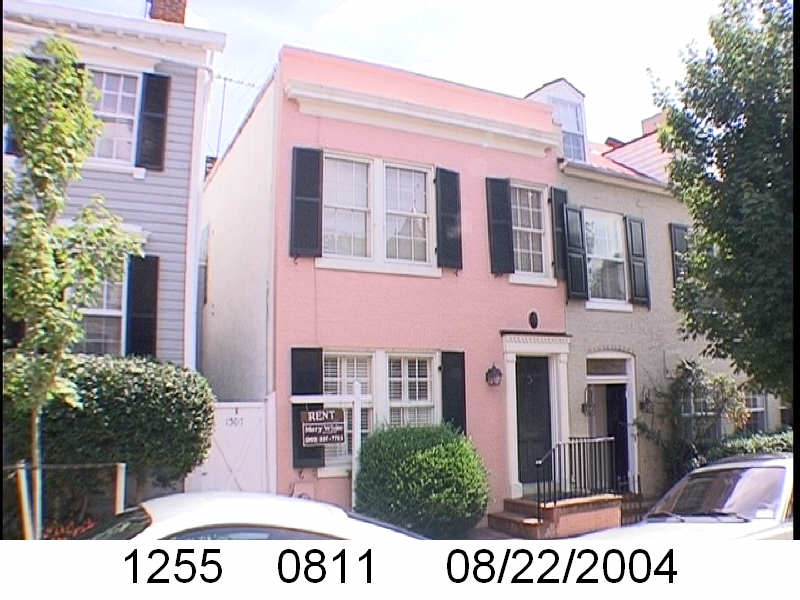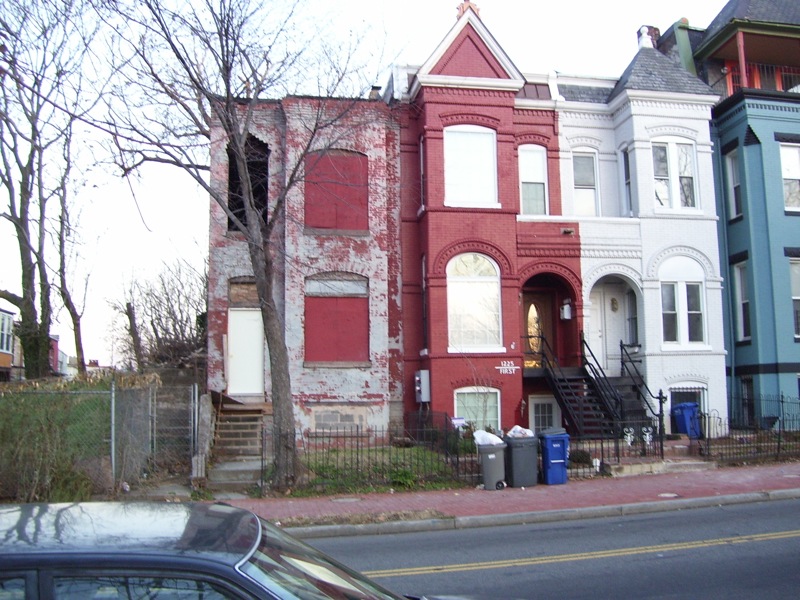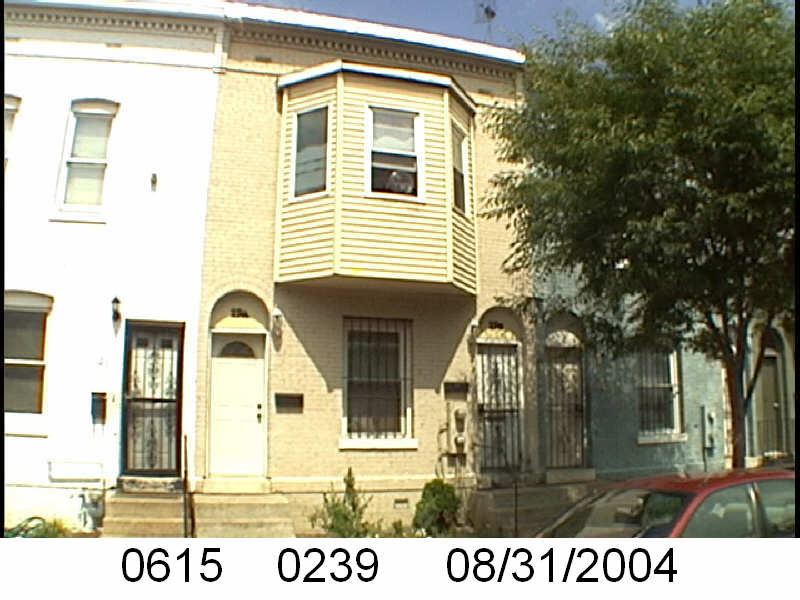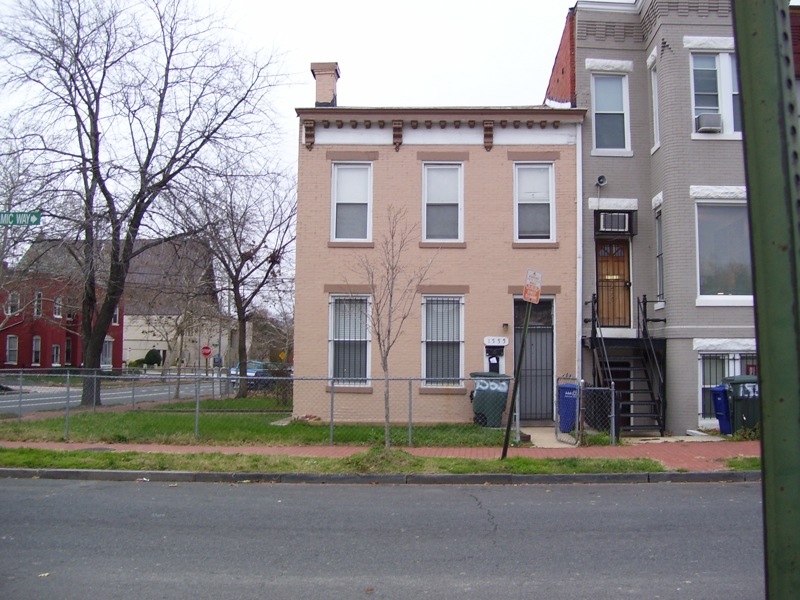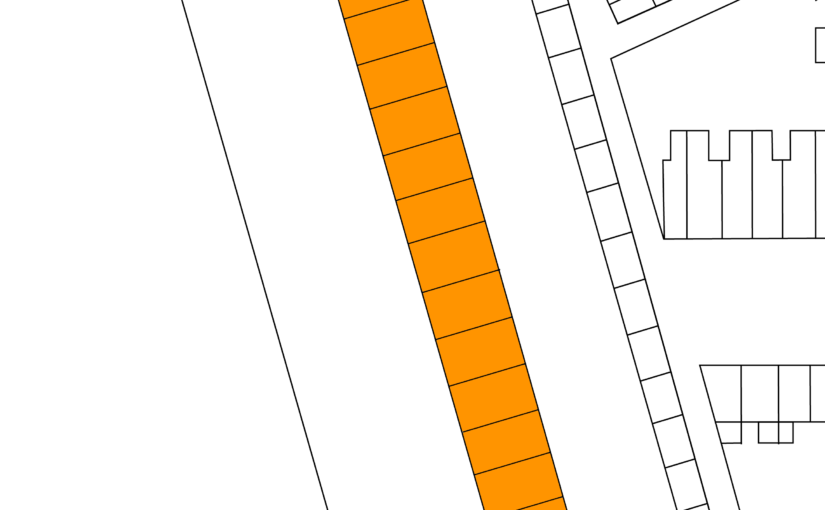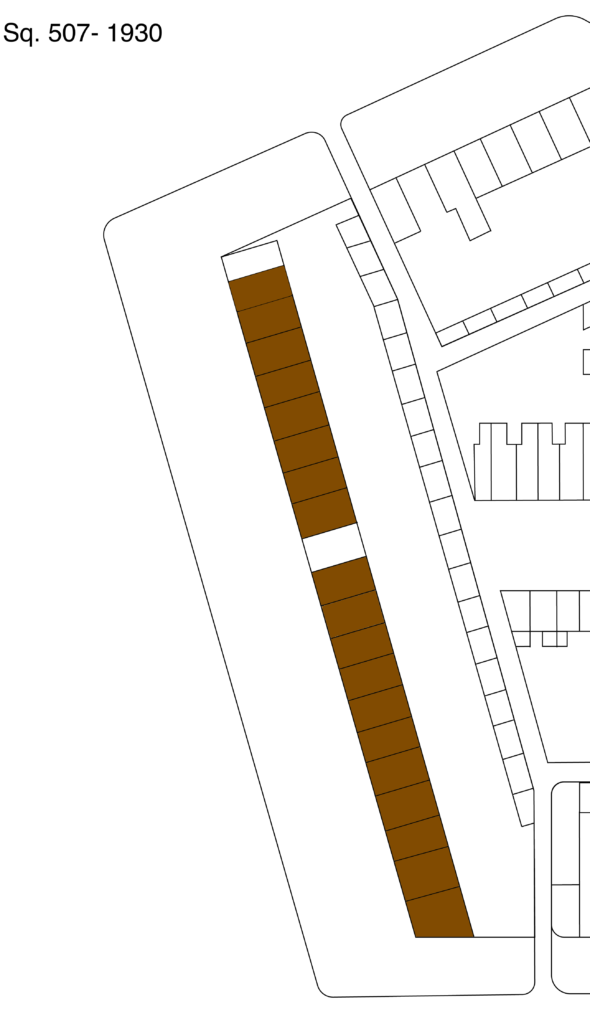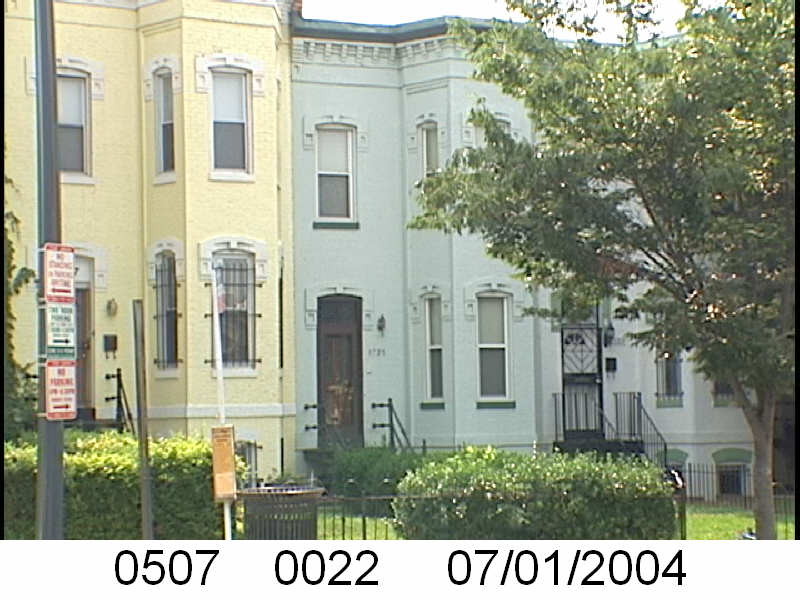So in September I am presenting at the ASALH Conference and talking about Truxton Circle resident and filmmaker Eloyce Gist. The IMDb has credited her with the feature length Hell-bound Train (1930). The Library of Congress has the film on their website and if you want to download about 5 gigs of a QuickTime file, you can see it.
I’ve made notes about Hell-bound Train, I’m just going to throw them here because I know they won’t fit in the presentation:
“the hell-bound train is always on duty, and the devil is engineer.”
-No Round Trip Tickets. One Way Only. Satan Lucifer. Manager. Eng.
– Free admission to all. Just Give Your life and soul. Your Best Friend, Satan.
“Well, we’ll take a chance.” (1:30)
“How my heart does rejoice” (1:58)
“DANCING IS THE FIRST COACH” (2:07)
“Because the dance of today is indecent” (2:15)
“There’s room in hell for BOOTLEGGERS and their followers” (3:07)
“Bootleggers are the honored guests. Women must learn to drink” (3:34)
“Girls are mislead by the whispers of a man.” (4:06)
“Many a girl followed the dance until —-“ (4:18) scene of woman with baby in bed.
“Women deceive their husbands at the dance.” (4:33)
“The dance dismisses with drunkness, jealousy and evil”
“The Devil Rejoices” (5:34)
“This happens at the dance.” (5:40)
“Again the devil rejoices.” (5:54)
“POLICE! POLICE!” (6:09)
“And this makes the Devil rejoice.” (6:49)
“SECOND COACH DRUNKENESS Wife and children of a drunken man must suffer.” (7:03)
“Papa, please wake up – Mamma’s crying about something.” (7:26)
-Madame, Your Rent is due tomorrow or out you go. A.J. Gaudy, Landlord (7:33)
“Drunkards are robbed by their best friends.” (7:54)
“Women and girls are mistreated while drunk” (8:30)
“She’s drunk, please take her home” (8:59)
“Some mother’s daughter she is – “ (9:19)
“One Hour Later” (9:32)
“Thousands have been poisioned by intoxicating liquors” (9:46)
“THIRD COACH IS JAZZ MUSIC. It started to fame in Cabarette life.” Scene featuring a White passing woman gambling in a room with other Black women.
“It destroys the mind of little children.” (10:23)
“It may bring happiness to you through life” (10:31)
“But at the point of death.” (10:39)
“Mary, Emma, Come quick, stop those blues, BRING HYMN BOOK.” (10:48)
-Rock of Ages (out of focus most of the time) (11:00)
“Too late then.” (11:07)
“And now it has weaved its way into CHRISTIAN homes.” (11:27)
-[picture by artist Leo-Augustin Lhermitte] Christ Among the Lowly 1930 Home and Church (11:32)
“How my heart does rejoice – “ (11:59) Devil engineering train scene
“NEXT THIEVES, CROOKS AND GRAFTERS. Many women will steal from their friends –“ (12:07)”
“Pick Pockets” (13:07)
“This coach also carries cheating business men.” (13:38)
“The POOL ROOM is such an UNGODLY PLACE that detectives go there to round up criminals and crooks.” (14:31)
15:40 White man (Jewish?) in room with hat and glasses to be the robbery victim.
“Often its the latest joiner who gets caught.” (15:52)
“Stick ‘em up! Big Boy!” (16:09)
“Don’t move or we’ll knock your heart out –“ (16:42)
“The fate of Thieves, Bootleggers, and law-breakers.” (17:23)
17:33 White cop with rifle pacing/guarding. As striped uniformed prisoners shovel coal in snowy train yard.
“How my heart does rejoice – “ (17:42) Devil dancing in train yard
“Thou shall not steal.” (17:50)
18:01 White grocer comes out of store after young men steal apples from outside barrel
“Yes, they ran that way –“ (18:08)
“That’s them, they are always stealing” (18:20)
“I’ll put ‘em, where they can’t steal.” (18:24)
“Here’s two more to add to your crew.” (18:38)
18:43 White cop from 17:33 and the two join the striped guys
“The Devil Rejoices.” (19:08)
“Next Coach MURDERERS AND GAMBLERS A low-browed and dishonest game.” (19:20)
“Trim every guy you can – We need the money – “ (20:02)
“Good work, Bo Jack. Keep it up. Don’t let anybody win” (21:28)
21:48 – Suited white man exits building. Also 24:43;
“Working men, why be such fools?” (22:24)
“They’ve robbed me of my week’s pay – What about my wife and children?” (22:39)
“Here’s three dollars, get out of here – “ (22:47)
“I’m going to win enough to pay my bills.” (23:07) Man loses and trades in clothes for money.
“Put them old overalls on in there.” (23:41)
“Many will rob a working man and mislead his daughter” (24:27)
“Now, go home to the wife, Sam. Don’t waste your money.” (24:54)
“How can I help but be crazy about you?” (25:39)
– 25:50 White rental agent appears
“No money to-day, until my husband gets home.” (25:58)
“The collector just left – and the grocery bill is due today.” (26:16)
“Can’t help that, I ain’t got no money. Get away.”(26:25)
“Many a crooked father drives his daughter to this – “ (26:43)
“The same bootlegger who broke the father.” (26:54)
“My father came home without any money.” (27:05)
“Follow me. I’ll give you some money.” (27:14)
“And how this makes the Devil rejoice.” (27:21)
“Girls shouldn’t be impudent to mother,” (27:36)
“I’m old enough to know and I am going where I please.” (27:53)
“For as months pass, you may be brought to sorrow.” (28:35)
“Disobedient children are on the road to downfall” (29:15)
“I’ve told you all not to play in the street” (29:34)
“A few days later” (29:45)
“Boys who mistreat dumb animals” (30:06) boys later tie string & tin can to dog’s tail.
“A Coach represents IMMORALITY Women and men with no care and respect.” (30:44)
“Women don’t care what happens before children.” (31:12)
“Children practice just what they see.” (32:30)
“Old men flirting after young girls.” (33:17)
“She has taken medicine to avoid becoming a mother. SHE’D better get right with GOD, for it’s murder in COLD BLOOD” (33:31)
“Critical condition. She’ll hardly make it.” (34:10)
“Oh, Is he your husband.” (34:39) White passing woman
“Oh no, just one of my boarders. STAR BOARDERS.” (34:45)
“But yet they live as man and wife –“ (35:18) The White passing woman and Black man sit down for breakfast/lunch/coffee.
“The Devil loves a man who lets another woman get his money, while his wife suffers.” (35:32)
“I want some money, sweetie, got to get a dress – “ (36:25)
“Look out Baby, got to have something for the wife.” (36:36)
“Here, two dollars is enough for her.” (36:46)
“The wife works hard to make home comfortable.” (36:58)
“After working a whole week. – Oh what a man.” (37:12)
“Be careful wives, how you treat your husbands “ (37:36)
“Her sweetheart” (37:43)
“No wonder this guy never works – “ (38:13)
“Dinner time at both ends.” (38:31)
“This is what I call life, Baby. I’m getting sleepy.” (38:50)
“Not much work today, comes home earlier –“ (39:07)
“The wages of sin is death Rom. 6:23.” (39:31)
“I knew I’d catch you sooner or later.” (39:36)
“The last coach is reserved for BACKSLIDERS, HYPOCRITES, and USED TO BE CHURCH MEMBERS, “ (40:06)
““Oh, It’s too hot to sit up in a church on a day like this”.” (40:32)
“As Sunday speeds away – – “(40:45)
“Some people serve GOD when in trouble” (41:39)
“And as soon as they are on their feet they go back to the DEVIL” (41:54)
“And the Goodhearted Sinners who treat friends right but mistreat GOD above” (42:09)
“I don’t drink, gamble or steal, I treat everybody right, I pay my debts, even if I haven’t repented been baptized, or joined Church.” (42:23)
“I am as good as some of those in the Church.” (42:39)
“Poor Boy, you’ll regret it some day.” (42:46)
“The Devil Rejoices.”(43:24)
“COACH NO. SEVEN IS OVERCROWDED WITH LIARS.” (43:48)
“False preachers join on plots against one another.” (44:17)
“”If we get rid of him we’ll be all right.”” (44:34)
“FALSE PREACHERS will get with the officers and steal the Church’s money.” (44:44)
“Often they walk hand in hand with the Devil.” (44:53)
“While righteous Preacher strives to carry the program of JESUS CHRIST” (45:01)
“While some serve God on the Sabbath Others worship Automobiles” (45:37)
“THE GOOD TIME MIDNIGHT LIFE CROWD will be lost in HELL. “Therefore come out from among them and be ye separate. 2 COR 6:17”” (46:16)
“SABBATH BREAKERS To Church in morning, With the Devil the rest of the day.” (46:38)
“As people continue to trample the word of God.” (47:04)
“The fast sinful life of the HELL-BOUND TRAIN MOVES ON until it’s too late.” (47:31)
“Death receives message – That sin is rushing too fast -” (47:51)
Sign waving cloaked figure “ENTRANCE TO HELL WELCOME ALL” (48:23)
“Flags the train down at –”(48:19)
[SIGN] ENTRANCE TO HELL WELCOME ALL (48:25)
view of poster THE MIDNIGHT SPECIAL RUNNING WITH NO HEADLIGHT It’s a Hell-bound Excursion Train… Is the man James Gist?
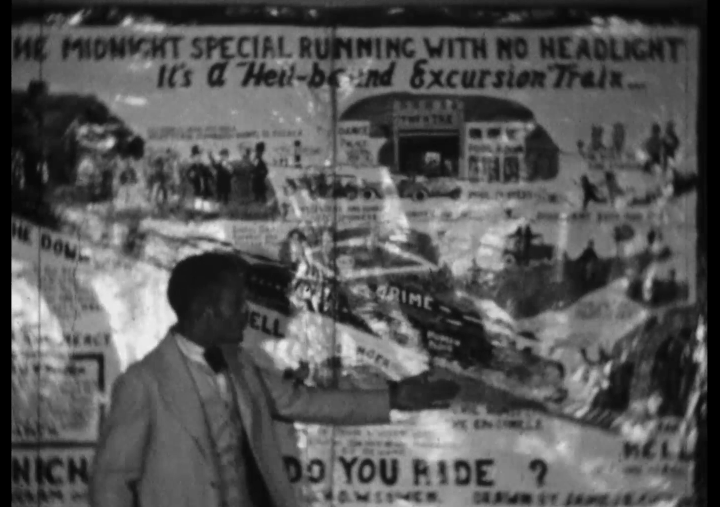 Next time I should do the shorts.
Next time I should do the shorts.
